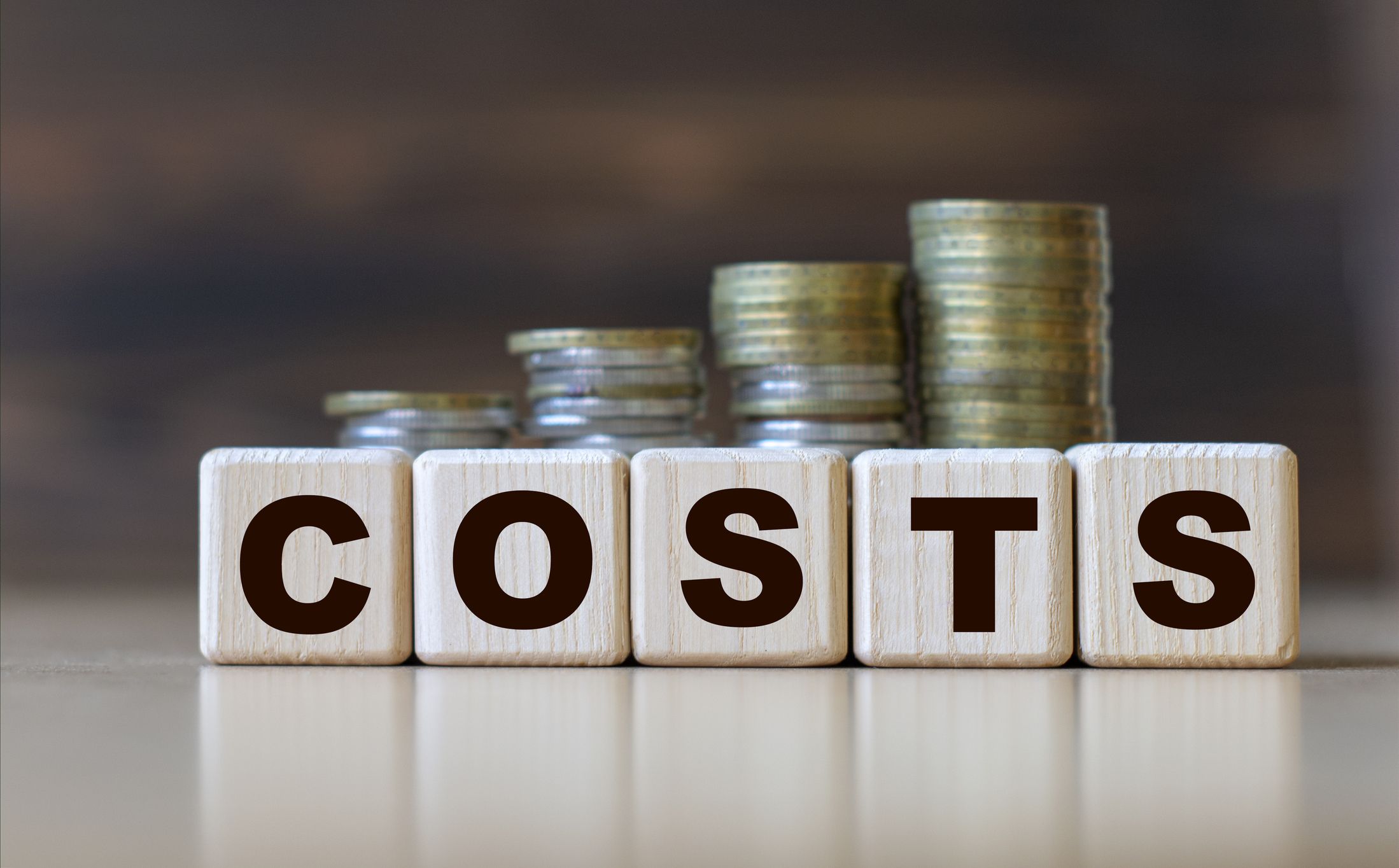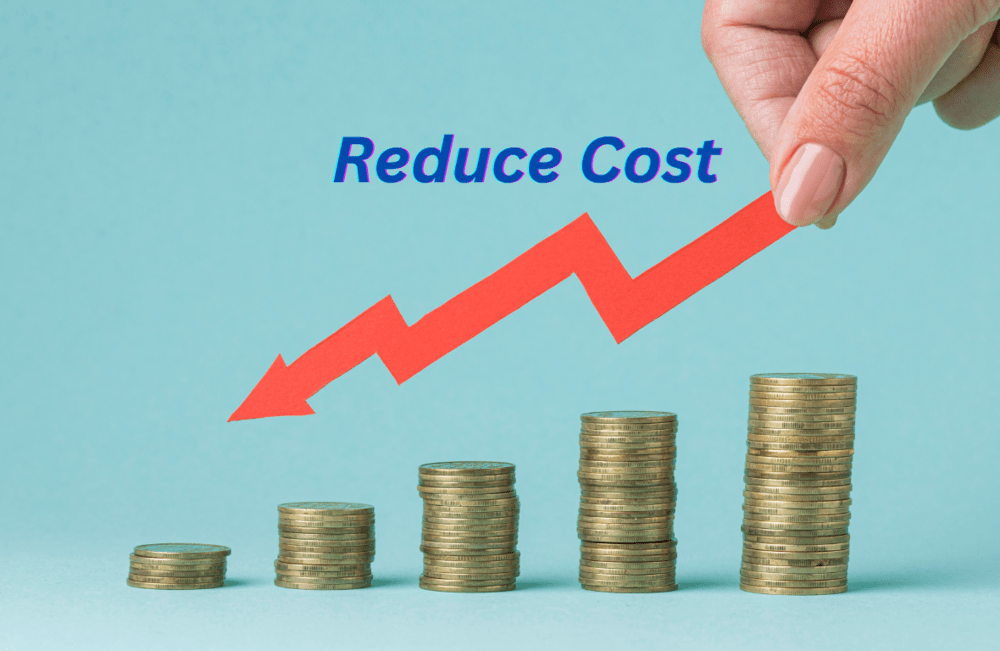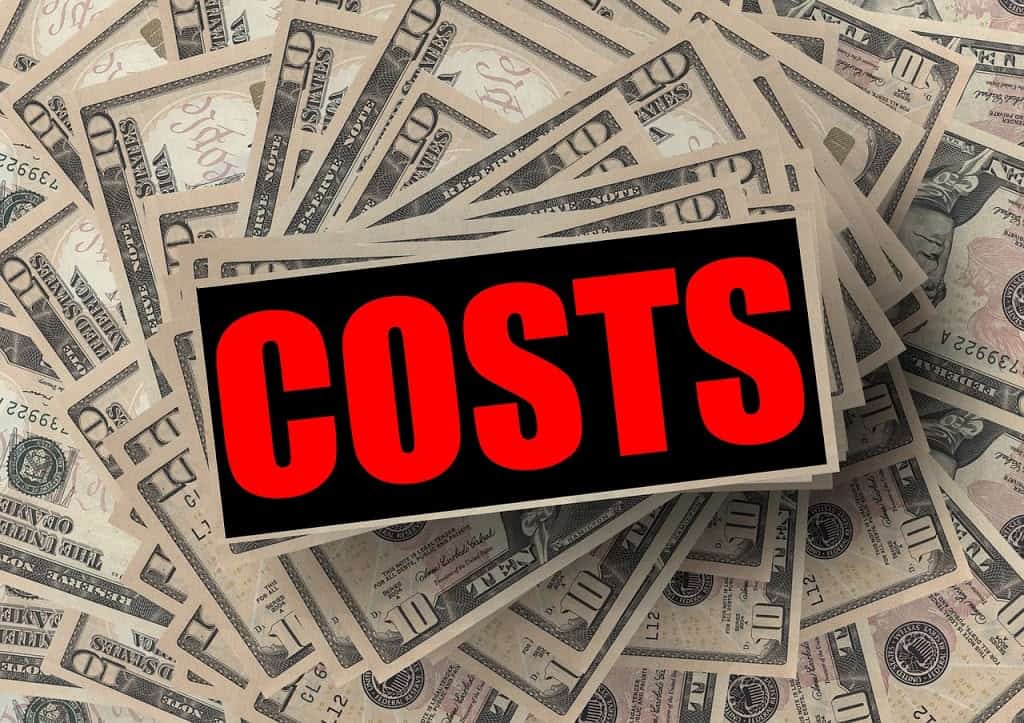Many folks find themselves drawn to the vibrant look of dragon fruit, with its striking colors and unique texture, yet a question often pops up about its price tag. It's a fruit that stands out, for sure, and its presence on a grocery shelf can sometimes make you pause and wonder just what goes into that particular number you see displayed. So, you know, when you pick one up, there's often a little thought about the money involved, isn't there?
This exotic produce, with its bright pink skin and speckled white flesh, really has a journey before it reaches your kitchen. The amount of money a shop asks for it, that is, the price, is not just some random figure; it actually reflects a whole series of efforts and expenses that happen along the way. There are, for instance, a lot of different pieces that come together to form that final sum, a sort of collective total of all the things that have been paid for.
To truly grasp what you are paying for when you buy this interesting fruit, it helps to look a little closer at where that money goes. We will be looking at what goes into bringing this fruit from its growing spot to your local store, covering all the little bits that add up to the final sum you hand over. It's, you know, a bit like peeling back the layers of an onion to see what's inside.
- Shaunie Henderson Net Worth
- What Happened To Dr Ross On Vet Life
- Encouragement African American Wednesday Blessings
- Sophie Cunningham Wife
- Graham Stephan Wife
Table of Contents
- What Influences the Cost of Dragon Fruit?
- Is the Cost of Dragon Fruit Worth It?
- Comparing the Cost of Dragon Fruit Across Places
- Making Sense of the Cost of Dragon Fruit
What Influences the Cost of Dragon Fruit?
When you consider what you pay for a dragon fruit, it's really the culmination of many different expenses. Think of it as the total money that has been used up to get that fruit from the plant to your shopping cart. This total includes the money spent on growing it, bringing it to where it needs to go, and even the money a store spends to have it ready for you. It's, you know, a sort of chain of payments that all add up.
Every step in the fruit's journey adds a little bit to that final figure. From the moment a tiny seed or cutting goes into the ground, money is being put into the process. Then, when it's time to gather the fruit, more money is spent. And, quite naturally, moving it from one spot to another, especially over long distances, definitely adds to the overall sum. So, it's almost like a series of tiny investments that eventually lead to the price you see.
The type of place where it is grown also plays a role in the money needed. Some areas might have lower expenses for things like land or people to work, while others might have higher ones. These differences in what it costs to produce the fruit at the very beginning can, in some respects, have a big impact on what you end up paying. It's not just about the fruit itself, but where it comes from and what it takes to grow it there.
- Merry Xmas Text
- Love Is Blind Jessica Height
- Sympathy Messages For Loss Of Father
- Whats Blippis Real Name
- Who Were Sam Elliotts Wives
Where Does the Cost of Dragon Fruit Begin?
The very first part of the cost of dragon fruit begins right where it grows. Farmers need to pay for the land, which can be quite an expense, particularly in certain regions. Then there are the plants themselves, which, you know, need to be bought or started. Water, a pretty important element for any crop, also comes with a price, whether it is from a well or an irrigation system. These are all amounts of money that are used up to produce the fruit.
Taking care of the plants also involves a significant portion of the money spent. This includes the pay for people who tend to the plants, prune them, and make sure they are healthy. There are also things like plant food or ways to keep bugs away, which are, you know, expenditures required to get the fruit ready for normal use. These elements are all part of the amount of money needed to make something like dragon fruit.
Harvesting the fruit, too, is a careful process that requires human effort, and those efforts need to be compensated. Each fruit is often picked by hand, which means more people are involved, and their time is, quite naturally, a part of the overall money paid. So, basically, every single dragon fruit you see has had a number of hands involved in its early life, each adding to its initial sum.
Getting the Cost of Dragon Fruit to Your Table
Once the dragon fruit is picked, its journey to your table starts, and this phase adds significantly to the cost of dragon fruit. Moving fresh produce, especially something as delicate as dragon fruit, needs special care. This often means using refrigerated trucks or even airplanes, which are, you know, quite expensive ways to transport goods. The money spent on fuel, drivers, and keeping the fruit cool all contributes to the final price.
Before it even gets on a truck or plane, the fruit needs to be sorted and packed. This involves people checking each fruit for quality, putting them into boxes, and getting them ready for shipping. The boxes themselves, and any special padding to protect the fruit, are also part of the money that has been used up. This is, in a way, the amount paid to get the product ready for its next step.
Then there's the money involved in storing the fruit once it reaches a distribution center or a store. Keeping it fresh means maintaining specific temperatures and humidity levels, which requires energy and specialized facilities. All these steps, from the farm gate to the shop shelf, represent money that is paid for goods and services received, all adding to the ultimate sum you pay for that fruit. It's, as a matter of fact, a pretty involved process.
Is the Cost of Dragon Fruit Worth It?
This question often comes up when people see the price of dragon fruit compared to other, more common fruits. Whether the money you hand over for it feels like a good exchange for what you get really depends on what you value. For some, the unique taste, the visual appeal, or the experience of trying something different makes the sum paid feel completely fair. It's, you know, a matter of personal preference and what you hope to gain from the purchase.
The amount of money needed to buy this fruit might seem a bit high to some, especially if they are used to apples or bananas. However, the definition of cost can also involve the value of what you receive. If the fruit brings you joy, or if you use it in a special dish that makes a meal memorable, then the money spent might be seen as an investment in that experience. So, it could be, that the value extends beyond just the fruit itself.
Thinking about the cost of dragon fruit also brings up the idea of what else you could have bought with that same money. This is often called an "opportunity cost." If buying dragon fruit means you can't buy something else you wanted, then that other item is, in some respects, part of the cost. It's about weighing what you gain against what you give up, which is a pretty common way to think about money choices.
The Hidden Cost of Dragon Fruit – What You Don't See
Beyond the obvious expenses like growing and shipping, there are often less visible factors that add to the cost of dragon fruit. For example, the money spent on research to improve fruit quality or to find better ways to grow it sustainably might not be something you directly see on the price tag, but it is certainly part of the overall value of money that has been used up. These efforts help ensure the fruit continues to be available and of good quality.
Another less obvious part of the total sum is the money involved in marketing and branding. Shops and suppliers spend money to make the fruit look appealing, to tell its story, and to encourage people to buy it. This includes things like packaging design, advertising, and even the displays in the store. These are, you know, expenditures required to sell a product, and they are ultimately reflected in the amount paid for it.
There is also the money that goes into managing the business operations behind getting the fruit to market. This includes things like office staff, insurance, and maintaining buildings. These are all parts of the amount of money needed to do or make something, and they are, basically, part of the overall cost that the consumer eventually pays. So, there are many layers to the final figure you see.
How Does Season Affect the Cost of Dragon Fruit?
The time of year, or season, can have a rather significant impact on the cost of dragon fruit. When the fruit is in its main growing season, and there is a lot of it available, the supply is high. This often means that the amount or equivalent paid or charged for something will be lower because there is plenty to go around. It's a simple case of supply and demand, really, which often dictates prices.
Conversely, when dragon fruit is not in season in a particular area, or if it has to be brought in from very far away, the money needed to acquire it tends to go up. This is because the expenses for things like long-distance transport and special storage facilities become much greater. So, you know, if you are buying it in the middle of winter in a place where it doesn't grow, expect to pay a bit more.
Weather events, too, can influence the money needed. A bad storm or a period of unusual temperatures in a growing region can reduce the amount of fruit available. When there is less fruit, but people still want to buy it, the price paid to acquire it will usually increase. This is, you know, just another example of how external factors can push up the final sum you see at the store.
Comparing the Cost of Dragon Fruit Across Places
The money you pay for dragon fruit can differ quite a bit depending on where you are in the world, or even in your own country. In places where dragon fruit is grown locally, the amount paid or required in payment for a purchase will generally be lower. This is because there are fewer expenses related to moving the fruit over long distances, and the initial production costs might also be less. So, naturally, local markets often have better deals.
If you are in a country or region where dragon fruit is not native and has to be imported, the money needed to buy it will almost certainly be higher. This is because of the added expenses of international shipping, customs duties, and the various handlers involved in getting it across borders. These are, in fact, all parts of the amount paid to acquire, produce, accomplish, or maintain anything, and they add to the final cost.
Even within the same city, the amount of money asked for dragon fruit can vary from one shop to another. A large supermarket might be able to buy in bigger quantities, which can reduce their cost of acquisition, and they might pass some of those savings on to you. A smaller, specialty store, on the other hand, might have higher overheads or focus on premium quality, which could mean a higher price for you. It's, like, different business models resulting in different sums.
What About Organic Cost of Dragon Fruit?
When you see "organic" on a dragon fruit, it usually means the cost of dragon fruit will be a little higher. This is because growing fruit organically often involves different methods that can be more labor-intensive or require more specific care. For example, instead of using certain chemical pest controls, farmers might need to employ more manual methods or natural solutions, which can increase the amount of money needed to produce the fruit.
The certification process for organic produce also adds to the total sum. Farmers need to pay for inspections and meet certain standards to be able to label their fruit as organic. These are, in a way, expenditures required to get an asset ready for normal use, specifically for a particular market segment. So, the money spent on these certifications is passed along in the final price you pay.
Furthermore, organic farming practices can sometimes result in lower yields per plant compared to conventional methods. If a farm produces less fruit from the same amount of land, then the money spent on that land and the people working it has to be spread across fewer fruits, which naturally makes each individual fruit more expensive. This is, in fact, a common reason why organic produce often carries a slightly higher price tag.
Making Sense of the Cost of Dragon Fruit
Ultimately, the money you pay for dragon fruit is a reflection of a complex chain of activities, from its humble beginnings as a plant to its arrival in your shopping basket. Every step, from the farmer tending the plant to the person stocking the shelves, represents money that has been used up or paid for services rendered. It's, you know, the sum total of all those efforts and resources.
When you look at the price, you are essentially seeing the amount (measured in terms of money) paid for goods and services received. This includes the money needed to grow it, to move it, to store it, and to sell it. Understanding these different parts of the overall sum can help you appreciate why certain fruits, like dragon fruit, might carry a different price compared to others. It's, basically, a whole lot of small payments adding up to one larger one.
So, the next time you pick up a dragon fruit, you might have a better sense of the journey it has taken and the various amounts of money that went into getting it to you. It’s not just a fruit; it’s a product of many hands and resources, all contributing to that final price. It's, as a matter of fact, a pretty interesting way to look at something as simple as a piece of fruit.
This article explored the various elements that contribute to the cost of dragon fruit, drawing on the definition of "cost" as the amount of money paid or charged for something, the value of money used up to produce or deliver a service, and the expenditures required to make a product ready for use. We discussed how factors like production, distribution, seasonality, and organic farming practices influence the final price you see at the store, highlighting that the total sum reflects a complex series of efforts and resources.Related Resources:



Detail Author:
- Name : Dr. Jazmyne Grant Sr.
- Username : botsford.dayne
- Email : nader.justen@gmail.com
- Birthdate : 1972-10-17
- Address : 4398 Dixie Vista Jalenton, KY 24238
- Phone : 1-229-282-1275
- Company : Towne LLC
- Job : Farmworker
- Bio : Facilis vero sint doloribus tempore dolorem occaecati earum. Dicta eos beatae maxime aut voluptate. Placeat error omnis rerum temporibus repellendus omnis architecto. Eum cumque neque ad aut.
Socials
linkedin:
- url : https://linkedin.com/in/winnifred_id
- username : winnifred_id
- bio : Ut incidunt quia aut tenetur quo.
- followers : 1053
- following : 820
twitter:
- url : https://twitter.com/gutkowskiw
- username : gutkowskiw
- bio : Omnis qui et autem et. Sint culpa non quis reiciendis ea explicabo. Veniam voluptatem totam incidunt eum velit sed vitae.
- followers : 1280
- following : 916
tiktok:
- url : https://tiktok.com/@winnifred.gutkowski
- username : winnifred.gutkowski
- bio : Impedit quia expedita et omnis aut.
- followers : 4291
- following : 350